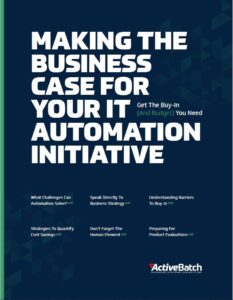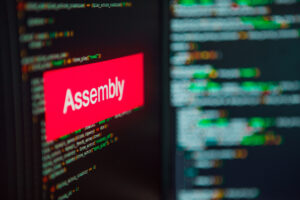Preparing For A NoOps Future With IT Automation

Why IT Teams Must Move Towards NoOps (No Operations)
IT teams are stretched thin. Digital initiatives are accelerating across the enterprise, adding new processes, tools and technologies to IT’s list of responsibilities. Most IT teams do not have the capacity to keep pace with demand. Over half of business partners report frustration with the time it takes IT to deliver digital services.
This isn’t exactly a new problem — digital transformation and resource shortages have been pressuring IT for years. Part of the solution to those challenges has been to streamline the development and release of software through DevOps. DevOps brought developers and operators together, doing away with the waterfall model and leveraging task automation to further shorten release cycles.
The COVID-19 crisis has forced organizations to rapidly digitize services and operations, in many cases recreating business models with a digital-first approach. The need for developers and innovation is now even greater — yet, IT teams continue to spend 68% of their time on day-to-day “keeping the lights on” tasks, a Mulesoft survey found.
The goal of NoOps is to eliminate manual tasks so that development lifecycles and IT environments can be managed without dedicated operations teams. Automation, monitoring and analytics can greatly reduce the need for human intervention, creating more efficiencies and reducing manual errors so that development teams have more time to spend on software development.
The pace of change is unlikely to slow as organizations adapt to consumer expectations, economic conditions and technology. IT will become increasingly responsible for customer experience campaigns and business operations, forcing IT teams to achieve more with less, with more speed and reliability. NoOps must play a role in strategic IT decisions in order for IT to meet these challenges.
Is NoOps Possible?
Conversations around NoOps often stoke incredulity. The idea of eliminating operations teams seems farfetched and counterproductive. Who’s going to manage legacy systems or respond to issues in production? Developers?
Much of the discussion around NoOps stems from a misunderstanding of what NoOps is. NoOps is an evolution of DevOps, using automation and cloud-services (PaaS and IaaS) to reduce the need for manual operations. In some cases, this leads to development and production environments that no longer require dedicated operations teams (see Dynatrace, Netflix and Mindtree for examples).
NoOps, for most organizations, will only ever apply to specific environments, as opposed to the whole organization.
Moreover, NoOps is often approached as a blue-sky goal, a mindset that’s voiced and supported by IT leadership. The goal is to create a culture that focuses on automation — automating everything that can be automated — in order to accelerate the delivery of new services and applications.
A lot of the discussion around NoOps mirrors early concerns about DevOps. As Damon Edwards wrote in 2010 for Dev2Ops.org, “Some may argue that DevOps is a lofty or even farfetched goal, but it’s difficult to argue that you shouldn’t try.”
The same applies to the NoOps model. IT teams are increasingly busy as organizations shift toward digital-first initiatives, finding it impossible to stay ahead of business demands. A report by Mulesoft found that 59% of IT teams are unable to deliver on all projects they commit to.
NoOps can help. Gartner expects that, by 2024, analytics and automation will enable IT teams to shift 30% of time spent on operations to continuous engineering. At the same time, hyperautomation will enable operations professionals to reduce operational costs by 30%. Whether or not you can fully automate your organization isn’t the point — you can and should strive for fully automated environments in order to keep pace with a growing list of business challenges.
Get the buy-in and budget you need for your IT automation initiative
Read five strategies that will help you build a business case for your IT automation goals.
Preparing For NoOps
As with DevOps, NoOps relies on culture and people as much as tools. This includes IT leadership instilling a mindset of automation and quality. For developers, this means shifting left. Automation, monitoring and alerting should be built into applications early in the development cycle, long before any new service hits production. This makes it possible to incorporate auto-remediation workflows into the application, preventing technical debt or production issues that would otherwise require operations.
Additionally, by running dev environments that mirror production environments, developers can shift quality further left. Paired with the right tools, such as change management, centralized logging, revision rollbacks and cloud infrastructure (PaaS and IaaS), developers can ensure high-quality services that can be easily deployed and managed should an issue arise.
There are a host of tools and technologies that can be used to facilitate a NoOps approach, including containers (Kubernetes), microservices and serverless computing. Orchestrating those tools and managing dependencies between disparate processes, without the need for manual handoffs or custom scripting, is key to laying the foundation for fully automated environments.
Leveraging IT Automation Platforms To Drive NoOps
Extensible IT automation platforms can and should play a key role in NoOps initiatives. IT automation software can make it easy to orchestrate processes across cloud-based and on-premises environments, while providing key capabilities that help streamline development.
For example, extensible automation solutions can provide REST API adapters that drastically reduce the time it takes to connect new endpoints to an environment. As a result, monitoring and management can be centralized, providing a single location for users to automate everything from resource provisioning to remediation workflows.
Let’s take a closer look at how IT automation capabilities can support NoOps.
Automated Provisioning
IT automation solutions that connect to cloud providers (Azure, AWS, Oracle Cloud, etc.) can be used to manage cloud computing in real-time. For example, when a developer pushes a new service into production, instead of waiting for the operations team to spin-up new servers, a process can be built that enables the automation solution to dynamically manage IT infrastructure based on real-time compute requirements.
Real-Time Monitoring And Alerting
Extensible automation solutions can make it possible to connect every endpoint in your tech stack. This in turn makes it possible to centralize monitoring across environments, giving IT teams a single location for reporting and in-depth visibility. Users can rapidly identify root-causes, drastically reducing time spent troubleshooting, or set thresholds that prevent issues from arising in the first place.
Additionally, alerts can be sent to teams or individuals notifying them that a recent change has resulted in an issue and that an automated response was taken to prevent an impact on the business.
Auto-Remediation
IT operations teams spend a lot of time fighting fires. Auto-remediation can help by enabling users to set thresholds that, when breached, trigger new processes. For example, if an SLA-critical workflow is going to be delayed, additional resources can be provisioned to make sure the workflow completes on time. Or, if a process can’t locate a necessary file, the process can be automatically paused, notifications can be delivered and the process restarted at a later time.
Change Management
Change management enables users to synchronize and manage applications between test, QA and production environments. An IT automation solution can automatically identify differences between environments so that updates can be easily deployed across different environments, reducing delays and supporting continuous delivery.
Revision Rollbacks
Revision histories provide a detailed view of any changes made to an environment so that in the case of an issue or failure, developers can quickly revert back to a previous version without waiting for an IT operations team.
Simulation Testing
Ideally, development and QA environments mirror production environments. But even so, when developers test an application they have to wait for the payload to execute. Simulation testing removes the need to wait for payloads by simulating the execution of applications and processes so developers can quickly identify and solve logic issues.
Finding IT Vendors That Support NoOps
The right IT automation platform for a NoOps initiative is going to provide extensibility and a range of features for both operators and developers. This ensures that new endpoints can be rapidly connected, supporting new technology requirements, while enabling users to automate a wide range of tasks, regardless of their role.
IT automation solutions offer a variety of features and capabilities, with vendors continuing to build-out functionality based on IT and business needs. This includes using artificial intelligence and machine learning to analyze environments, providing specific actions users can take to optimize their systems and prevent future issues. In the coming years, much of this will be automated, giving way to highly reliable, self-healing environments that give IT teams more time to focus innovation.
Ready to simplify your data warehousing with workload automation?
Schedule a demo to watch our experts run jobs that match your business requirements in ActiveBatch. Get your questions answered and learn how easy it is to build and maintain your jobs.








